New eruption at Fernandina volcano (Cerro la Cumbre), lava flows descending to the coast – Galapagos, Ecuador
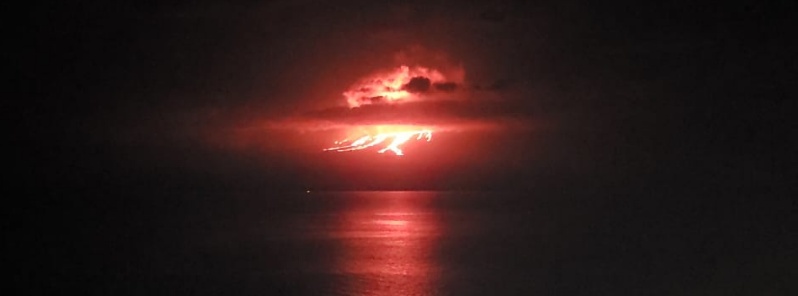
A new eruption started at Fernandina volcano (Cerro La Cumbre), Galapagos, Ecuador on January 12, 2020. The last eruption of this volcano took place from June 16 to 18, 2018. The island has no human population.
The eruptive activity started between 23:00 and 23:10 UTC on January 12, according to the IGEPN (Ecuador's Geophysical Institute).
Seismicity under the volcano started increasing at 20:42 UTC with M4.7, followed by 29 localized events with magnitudes below 3.1. At this time, the Taal volcano in the Philippines was already in a major eruption.
The first images show a radial fissure along the southeast edge of the volcano, with lava flows descending to the coast.
Fernandina is one of the youngest islands in the archipelago. Its ecological value is very high because its ecosystems host unique species such as terrestrial and marine iguanas, snakes, endemic rats, non-flying cormorants, and penguins, among others.
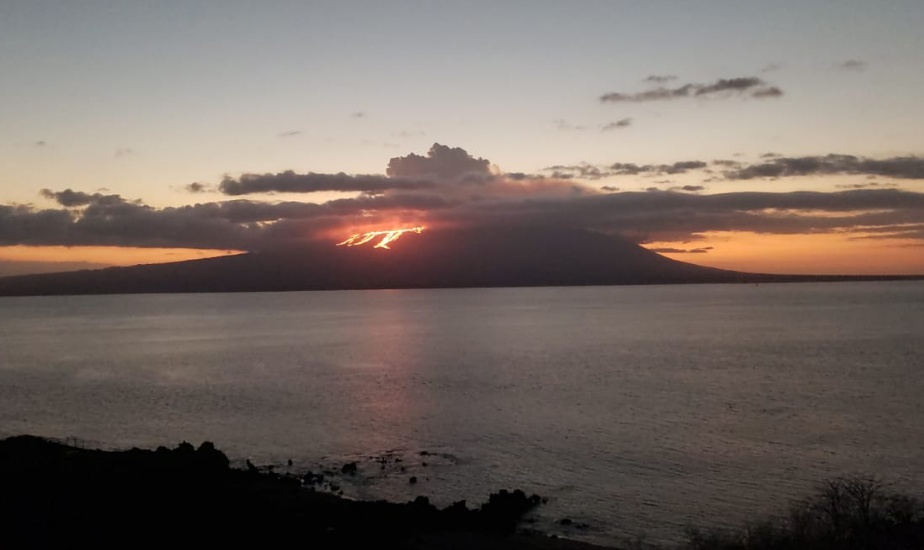
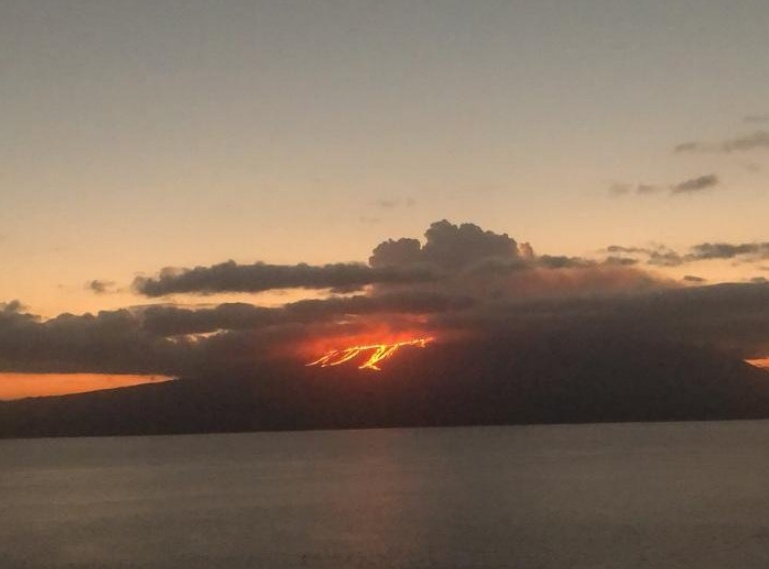
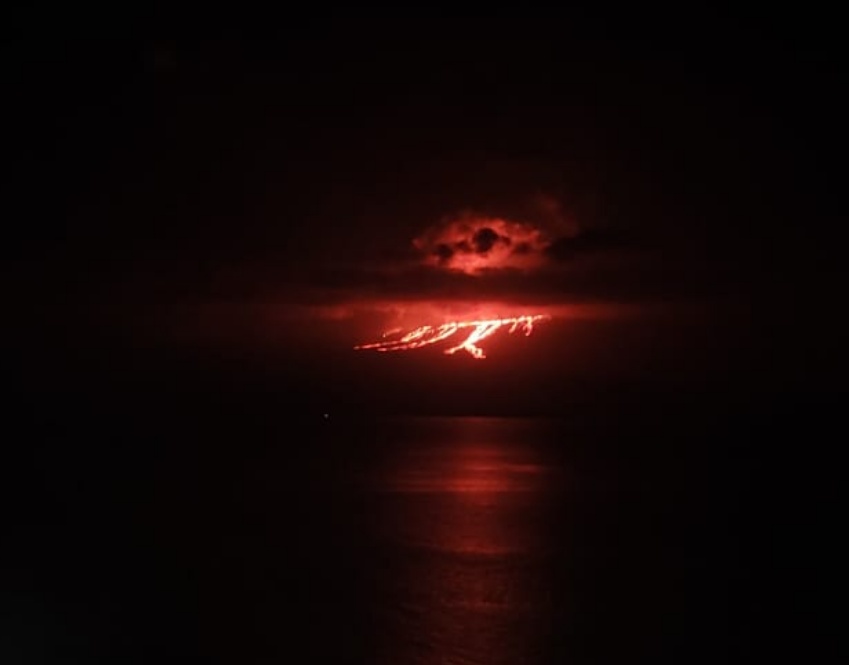
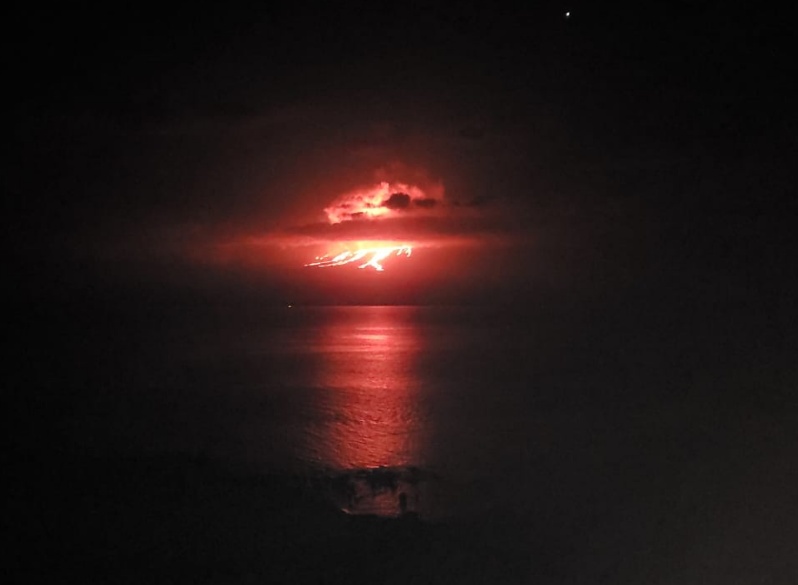
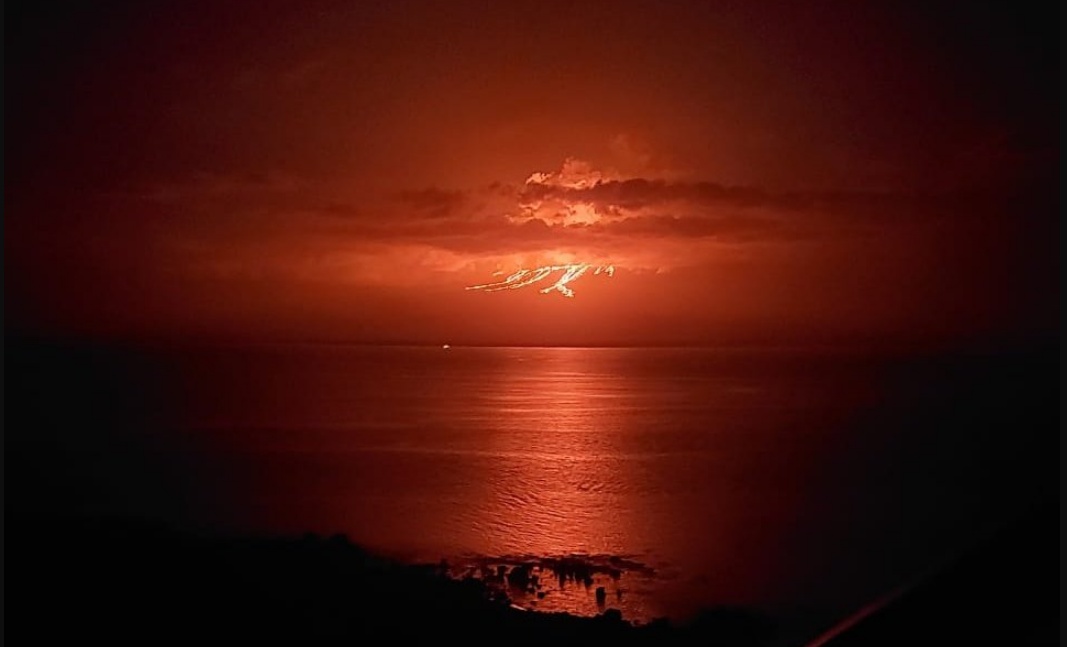
Cerro la Cumbre eruption on January 12 and 13, 2020. Credit: Galapagos National Park
The last eruption of this volcano started at around 15:00 UTC on June 16, 2018, and lasted through June 18 of the same year. Its previous eruption occurred in September 2017.
The June 2018 eruption took place on the north-northeast flank of the volcano.
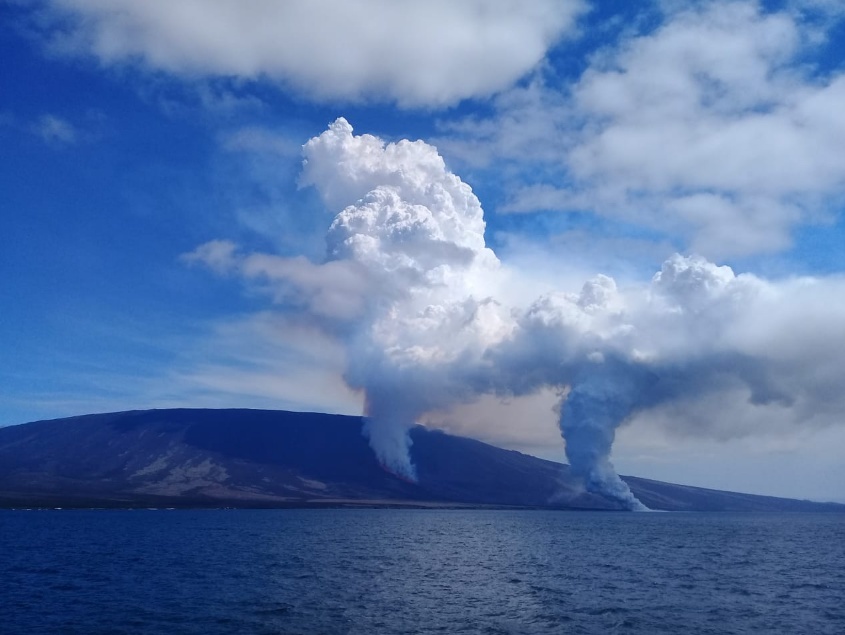
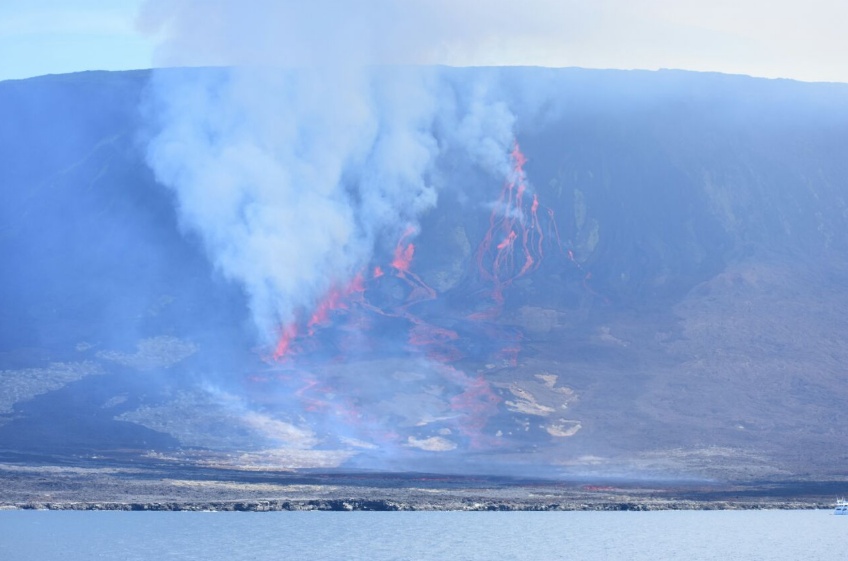
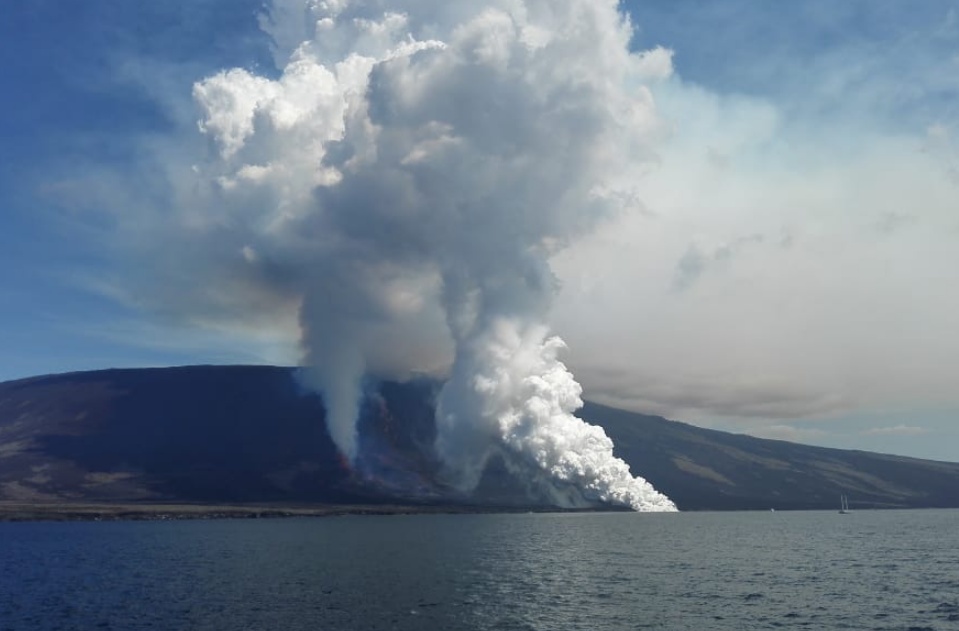
The eruption of Fernandina volcano on June 16, 2018. Credit: Sabina Estupiñan, Marcelo Izquierdo and Daniel Muñoz
Geological summary
Fernandina, the most active of Galápagos volcanoes and the one closest to the Galápagos mantle plume, is a basaltic shield volcano with a deep 5 x 6.5 km (3.1 to 4 miles) summit caldera. The volcano displays the classic "overturned soup bowl" profile of Galápagos shield volcanoes.
Its caldera is elongated in a NW-SE direction and formed during several episodes of collapse. Circumferential fissures surround the caldera and were instrumental in the growth of the volcano. Reporting has been poor in this uninhabited western end of the archipelago, and even a 1981 eruption was not witnessed at the time.
In 1968 the caldera floor dropped 350 m (1 148 feet) following a major explosive eruption. Subsequent eruptions, mostly from vents located on or near the caldera boundary faults, have produced lava flows inside the caldera as well as those in 1995 that reached the coast from a SW-flank vent.
The collapse of a nearly 1 km3 (0.24 mi3) section of the east caldera wall during an eruption in 1988 produced a debris-avalanche deposit that covered much of the caldera floor and absorbed the caldera lake. (GVP)
Featured image: Eruption of Cerro la Cumbre (Fernandina) volcano, Galapagos, Ecuador on January 12, 2020. Credit: Galapagos National Park

In the Light of Facts the Sun behavior is not so weird as could be seen before, but something has changed. The Earth on the revolution around the Sun is escaping about 22 km yearly in Mars direction, respective -122 degrees of thought circle in direction of Jupiter and Saturn conjugating next 50 years. Decalibrated Earth axis has shown last 3 years pending around 20 degrees to 8 degrees, between 40° and 60° North has a Summer Day prolonged in record time of 29-th. May to 16 hours and 40 minutes and still stand to 17-th. July around 17 hours. Just at September accelerated the Equaling of axis to 13 hours and around 20-th. September took 12 hours plus minus 15 minutes -East plus, West minus.
As the magnetic activity of Sun weaks, the Gravitation is getting stronger a little bit, in other hand the all Solar System is charged at least 89 years (from the year 1930) at new Aquarius Age by spreading of high frequention energy from the Galactic Core Sagitarius Alpha and under particles flux, that our scientist can not shield. So Sun alone has internal Temperature in diameter 28 milion Kelvins, deep, somewhere in inner core, around 100 milion Kelvins. You see, the Destiny is present everytime, how can the scientists explain star with hydrogen to helium nuclear syntesis, has also 0,7% of HNO cycle? If temperature is not 10e8 Kelvins, so pressure must be enormous- at 80 millions Kelvins ten times bigger as “usualy”. 4 Helium cores are binding into one 12 Carbon nucleus, very surprising fact and Carbon to Nitrogen.
Something is wrong, also the Mass of Sun became higher than official scientists like to mention about. It does not look like as a supernova, but higher gravity inflicts higher temperatures of planetcores and in front of this theme enormous seismic activity, don´t forget, this flux is touching all of planets and bodies in Solar System, and we can have an outer host finally! While neutrinos have a bodymass too, with their enormous number could
make a serious problems, not only by the Sun eclipse (earthquakes, volcano explosions), from the powerful energy source can crash the Earth.
The signs of this event are in the time that this went off, 23:00 and 23:10 UTC because January 18th is truly January the 23rd just like the time had read when this event had happened that means the 3rd day of the seventh month on the true Hebrew calendar.
12[3]45678910 times 4 this therefore means that the geological upheaval this time is indeed the hole world! 252 / 25 weeks and 2 days.
We are 13 days in 2020 and everyone can see what I said will happen around the ring of fire is becoming reality. The stage of geological upheaval has started and will intensify beyond expectations later this year. YOU MUST TRUST JAMAL SHRAIR WHEN HE TELLS YOU THAT HE KNOWS THE PHYSICAL REALITY OF THE SUN AND TO REPLICATE ITS PRIMARY ENERGY SOURCE
Coronal hole activity is charging every planet in our solar system.
Getting closer and closer to Volcanic winter in upper northern hemisphere regions.
Nice to see others studying the same thing.
We are 13 days in 2020 and everyone can see what I said will happen around the ring of fire is becoming reality. The stage of geological upheaval has started and will intensify beyond expectations later this year. YOU MUST TRUST JAMAL SHRAIR WHEN HE TELLS YOU THAT HE KNOWS THE PHYSICAL REALITY OF THE SUN AND TO REPLICATE ITS PRIMARY ENERGY SOURCE